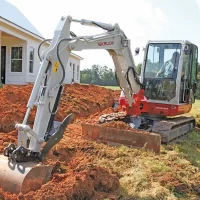Working at night poses unique safety challenges, from reduced visibility to potential fatigue-related issues. Addressing these concerns requires a comprehensive approach that encompasses both proactive measures and reactive protocols at 여우알바.
- Illuminate Work Areas: Proper lighting is essential for nighttime work. Ensure that all work areas are well-lit to minimize the risk of trips, falls, and other accidents. Use bright, energy-efficient lighting fixtures to maintain visibility throughout the 마사지알바
- Implement Safety Signage: Install prominent safety signage in and around the work site to alert workers to potential hazards. This includes signs indicating the location of emergency exits, first aid stations, and hazardous areas.
- Provide Personal Protective Equipment (PPE): Equip workers with appropriate PPE such as reflective vests, hard hats, and safety goggles. Reflective clothing enhances visibility, especially in low-light conditions, reducing the risk of accidents involving moving vehicles or equipment.
- Offer Training and Education: Conduct regular safety training sessions to educate workers about the specific risks associated with working at night and how to mitigate them. Topics should include fatigue management, proper use of equipment, and emergency procedures.

- Encourage Breaks and Rest Periods: Implement scheduled breaks to allow workers to rest and recharge. Fatigue is a significant concern during nighttime work, and regular breaks can help prevent exhaustion and maintain alertness.
- Promote Healthy Habits: Encourage workers to maintain a healthy lifestyle by eating balanced meals, staying hydrated, and getting an adequate amount of sleep during the day. Provide access to healthy food options and hydration stations on-site.
- Implement Buddy System: Establish a buddy system where workers are paired up to look out for each other’s safety. This ensures that no one is working alone and provides an additional layer of support in case of emergencies.
- Conduct Regular Safety Inspections: Perform routine inspections of the work site to identify potential hazards and address them promptly. This includes checking equipment for signs of wear and tear, inspecting walkways for obstacles, and ensuring that safety protocols are being followed.
- Utilize Technology: Take advantage of technology to enhance safety measures. This may include installing surveillance cameras to monitor activity in real time, using GPS tracking devices to locate workers in the event of an emergency, and implementing automated safety systems.
- Establish Emergency Response Procedures: Develop comprehensive emergency response procedures tailored to nighttime work conditions. This should include protocols for medical emergencies, fire incidents, and other potential threats. Ensure that all workers are trained in these procedures and know how to respond effectively.







No Comments
Comments are closed.